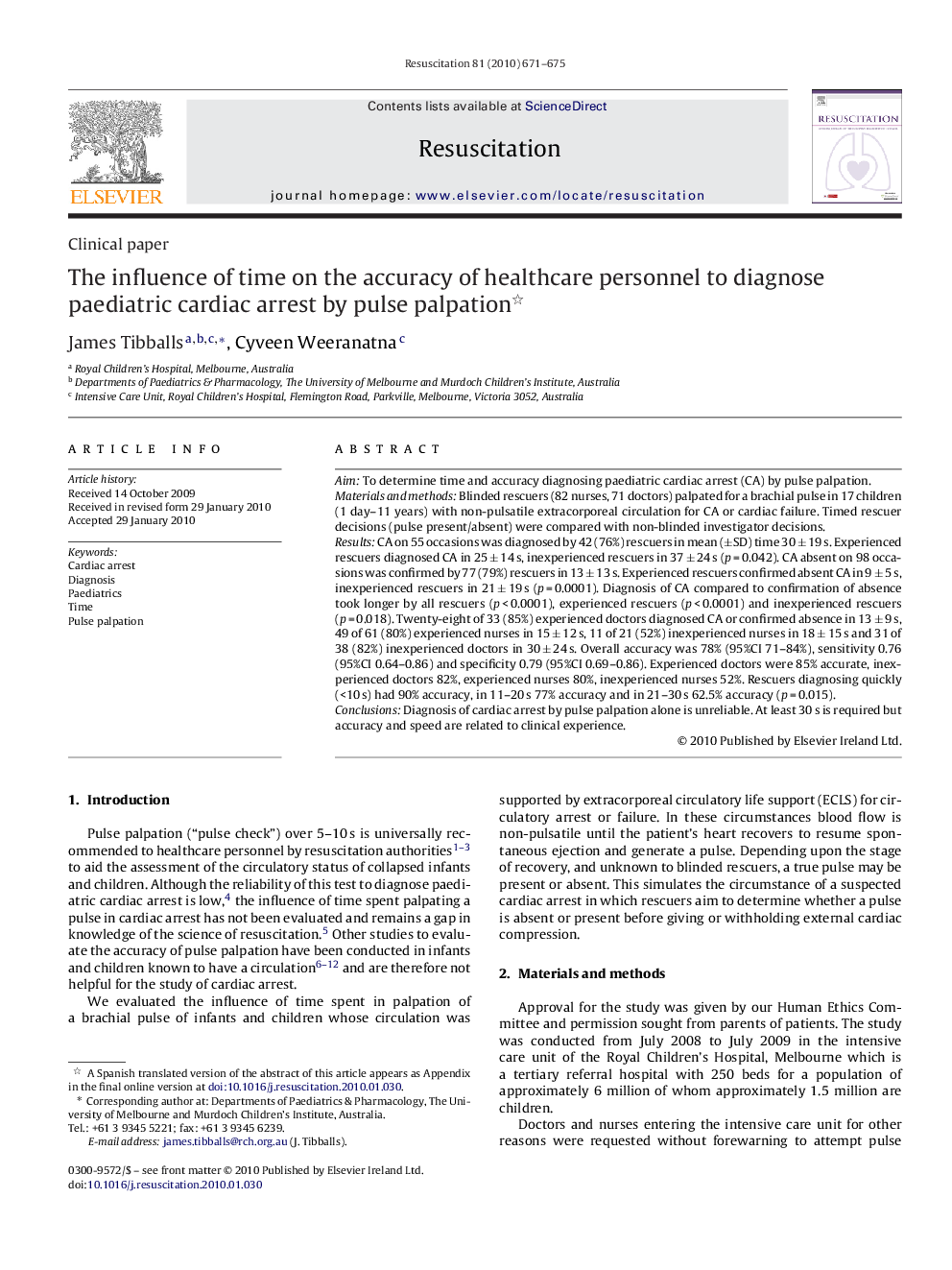| Article ID | Journal | Published Year | Pages | File Type |
|---|---|---|---|---|
| 3009886 | Resuscitation | 2010 | 5 Pages |
AimTo determine time and accuracy diagnosing paediatric cardiac arrest (CA) by pulse palpation.Materials and methodsBlinded rescuers (82 nurses, 71 doctors) palpated for a brachial pulse in 17 children (1 day–11 years) with non-pulsatile extracorporeal circulation for CA or cardiac failure. Timed rescuer decisions (pulse present/absent) were compared with non-blinded investigator decisions.ResultsCA on 55 occasions was diagnosed by 42 (76%) rescuers in mean (±SD) time 30 ± 19 s. Experienced rescuers diagnosed CA in 25 ± 14 s, inexperienced rescuers in 37 ± 24 s (p = 0.042). CA absent on 98 occasions was confirmed by 77 (79%) rescuers in 13 ± 13 s. Experienced rescuers confirmed absent CA in 9 ± 5 s, inexperienced rescuers in 21 ± 19 s (p = 0.0001). Diagnosis of CA compared to confirmation of absence took longer by all rescuers (p < 0.0001), experienced rescuers (p < 0.0001) and inexperienced rescuers (p = 0.018). Twenty-eight of 33 (85%) experienced doctors diagnosed CA or confirmed absence in 13 ± 9 s, 49 of 61 (80%) experienced nurses in 15 ± 12 s, 11 of 21 (52%) inexperienced nurses in 18 ± 15 s and 31 of 38 (82%) inexperienced doctors in 30 ± 24 s. Overall accuracy was 78% (95%CI 71–84%), sensitivity 0.76 (95%CI 0.64–0.86) and specificity 0.79 (95%CI 0.69–0.86). Experienced doctors were 85% accurate, inexperienced doctors 82%, experienced nurses 80%, inexperienced nurses 52%. Rescuers diagnosing quickly (<10 s) had 90% accuracy, in 11–20 s 77% accuracy and in 21–30 s 62.5% accuracy (p = 0.015).ConclusionsDiagnosis of cardiac arrest by pulse palpation alone is unreliable. At least 30 s is required but accuracy and speed are related to clinical experience.
